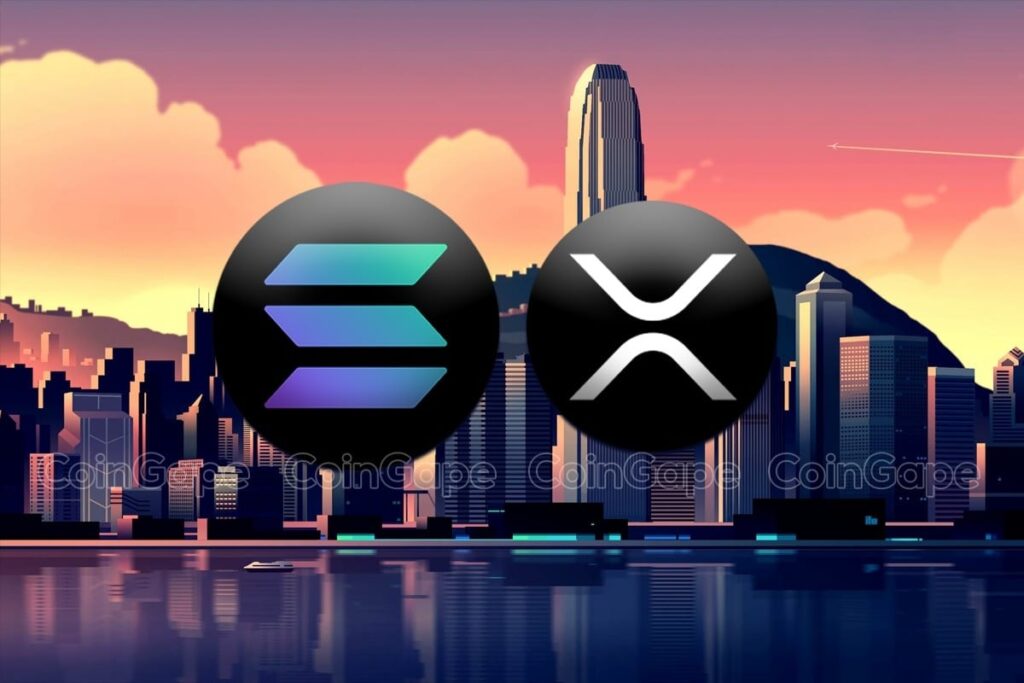Solana & XRP ETF Are Next After Ether, Here’s The Potential Approval Timeline

The recent approval of an Ethereum Exchange-Traded Fund (ETF) has sent ripples of excitement through the cryptocurrency community. As investors eagerly anticipate further ETF approvals, attention has turned to assets like Solana (SOL) and XRP, speculated to be next in line. In this exploration, we dissect the potential approval timeline for Solana and XRP ETFs, shedding light on the factors influencing regulatory decisions and market dynamics.
Understanding the ETF Craze:
Exchange-Traded Funds (ETFs) have emerged as a popular investment vehicle, offering exposure to diverse assets while providing liquidity and convenience to investors. The approval of a cryptocurrency ETF marks a significant milestone in mainstream adoption, opening doors for institutional and retail investors to participate in the digital asset market through traditional brokerage accounts.
The Ethereum ETF Precedent:
The recent approval of the Ethereum ETF in certain jurisdictions has set a precedent for other cryptocurrencies seeking ETF approval. Ethereum’s status as a leading smart contract platform and its widespread adoption in decentralized finance (DeFi) projects have bolstered its case for regulatory approval.
Solana (SOL) and XRP: Potential Contenders:
Solana (SOL): Solana has garnered attention for its high-performance blockchain, offering fast transaction speeds and low fees. Its growing ecosystem of decentralized applications (dApps) and strategic partnerships position it as a strong contender for ETF approval.

XRP: Despite facing regulatory challenges in the past, XRP remains one of the largest cryptocurrencies by market capitalization. Ripple’s ongoing legal battles with the U.S. Securities and Exchange Commission (SEC) have cast a shadow of uncertainty over XRP’s regulatory status. However, recent developments in the case have sparked optimism among XRP proponents.
Factors Influencing Approval Timeline:
Regulatory Clarity: Regulatory agencies play a pivotal role in determining the fate of cryptocurrency ETFs. Clear guidelines and regulatory frameworks provide clarity for issuers and investors, facilitating the approval process.
Market Demand: The growing demand for cryptocurrency investment products among institutional and retail investors could influence regulators’ decisions. A demonstrated need for diversified exposure to digital assets may expedite the approval timeline for Solana and XRP ETFs.
Issuer Compliance: ETF issuers must demonstrate compliance with regulatory requirements, including robust custody solutions, market surveillance mechanisms, and investor protection measures. Meeting these standards is essential for securing regulatory approval.
Potential Approval Timeline:
While specific timelines for Solana and XRP ETF approvals remain speculative, several milestones may shape the process:
Ongoing Regulatory Developments: Monitoring regulatory developments and legal proceedings involving Solana and XRP will provide insights into their regulatory status.
Issuer Initiatives: ETF issuers may collaborate with regulators to address concerns and expedite the approval process.
Market Demand: A surge in investor demand for Solana and XRP ETFs could incentivize regulators to accelerate the approval timeline.
Conclusion:
As the cryptocurrency market continues to evolve, the approval of ETFs for assets like Solana and XRP represents a significant step towards mainstream adoption. While regulatory hurdles and market dynamics may influence the approval timeline, the growing interest in digital asset investment products underscores the potential for widespread adoption. As investors await further developments, staying informed about regulatory changes and market trends will be key to navigating the evolving landscape of cryptocurrency ETFs.

